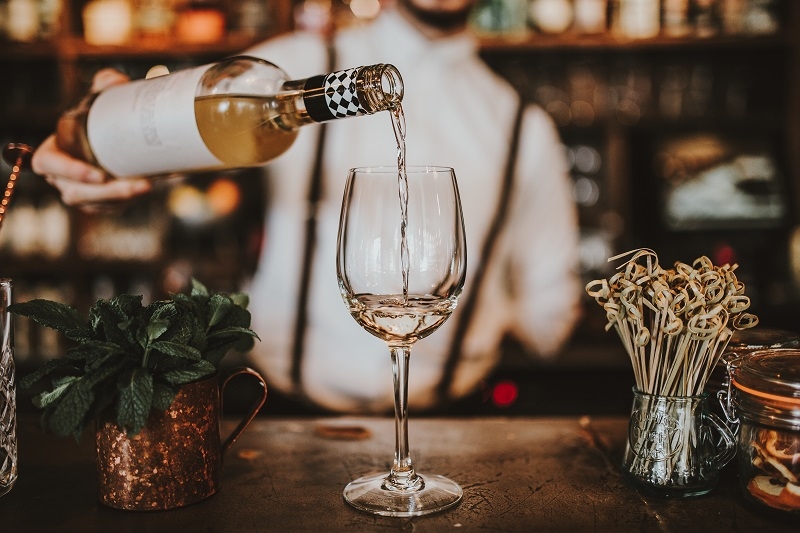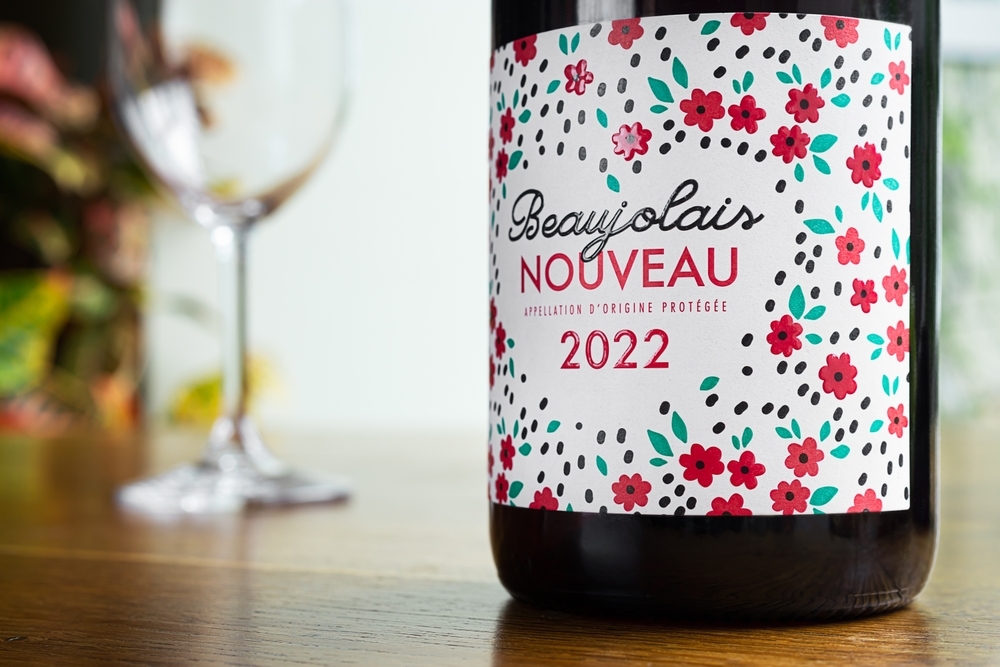Explore Bordeaux Wines: An All You Need To Know Guide

Bordeaux wines are some of the most renowned and sought-after wines in the world. From the iconic Left Bank cabernet-based wines to the Right Bank's luscious merlot-based wines, there's something for every wine lover in Bordeaux. With a variety of styles, climates, and soils, it can be intimidating to get to know these wines. That's why we've put together this Bordeaux Basics Guide, to help you get to know the wines of Bordeaux and understand the basics of this great region.
An Overview of Bordeaux
Bordeaux is a region located in the southwest of France, and it's one of the most important wine regions in the world. It's also the largest wine region in France, with more than 120,000 acres of vineyards and over 10,000 wineries. Bordeaux is known for its red wines, but it also produces some white and ros wines.
Bordeaux wines are made from a variety of grape varieties, including cabernet sauvignon, merlot, cabernet franc, and malbec. The region also produces a range of styles, from light and fruity to bold and tannic. The terroir of Bordeaux is incredibly varied, with different soils, climates, and grape varieties influencing the wines. This complexity makes Bordeaux wines some of the most interesting and sought-after in the world.
The Left Bank and Right Bank
Bordeaux is divided into two main areas: the Left Bank and the Right Bank. The Left Bank is known for its cabernet sauvignon-based wines, while the Right Bank is known for its merlot-based wines. Each area has its own unique terroir, with different soils, climates, and grape varieties influencing the wines.
The Left Bank is home to the appellations of Margaux, Saint-Julien, Pauillac, and Saint-Estphe. These appellations are known for their elegant, age-worthy cabernet sauvignon-based wines. The Right Bank is home to the appellations of Pomerol and Saint-Emilion, which are known for their luscious, fruit-forward merlot-based wines.
The Appellations of Bordeaux

Bordeaux is comprised of over 60 appellations, each with its own unique terroir and style of wine. The most famous appellations are the Mdoc, which is located on the Left Bank, and the Pomerol and Saint-milion, which are located on the Right Bank. The Mdoc is known for its cabernet sauvignon-based wines, while the Pomerol and Saint-milion are known for their merlot-based wines.
Other notable appellations in Bordeaux include Graves, Haut-Mdoc, Pessac-Lognan, and Sauternes. Graves is known for its cabernet-based red wines, while Haut-Mdoc and Pessac-Lognan are known for their blends of cabernet sauvignon and merlot. Sauternes is known for its sweet white wines made from Semillon and Sauvignon blanc grapes.
The Classification System of Bordeaux
Bordeaux is known for its classification system, which divides the wines of the region into different categories. The most famous classification system is the 1855 Classification, which divides the Left Bank wines of the Mdoc into five categories, from first growths to fifth growths. The Right Bank has its own classification system, which divides the wines of Pomerol and Saint-milion into different categories.
The classification system is based on the reputation of the wineries, and it is considered to be one of the most influential wine classification systems in the world. The wines classified as first growths are some of the most sought-after and expensive wines in the world.
The Climate of Bordeaux
Bordeaux has a cool and temperate climate, with mild winters and hot summers. The region is influenced by the nearby Atlantic Ocean, which helps to moderate the climate and create a longer growing season for the vines. The long, warm growing season is ideal for the production of high-quality wines.
The region is also known for its rainfall, which can sometimes be a problem for the vineyards. The vineyards are often exposed to wind and rain, and the winemakers must take extra care to protect the vines from these elements.
The Soils of Bordeaux
The soils of Bordeaux vary greatly, from gravelly soils on the Left Bank to clay-based soils on the Right Bank. The soils influence the wines, with the gravelly soils producing wines with more structure and tannins, and the clay-based soils producing wines with more fruit and soft tannins.
The soils of Bordeaux are also influenced by the region's history. The region was once covered by a prehistoric ocean, and the marine influences can still be seen in the soils today. The soils are also influenced by the region's volcanic activity, which has left behind mineral-rich soils.
The Winemaking Process of Bordeaux
Bordeaux wines are made using traditional winemaking techniques, such as barrel aging and blending. The winemakers in Bordeaux often use a blend of different grape varieties, such as cabernet sauvignon, merlot, cabernet franc, and malbec, to create the desired style of wine. The winemakers also use oak barrels to age the wines, which adds complexity and depth to the wines.
Bordeaux wines are also known for their age-ability, and many of the wines from the region can be aged for decades. The wines are typically bottled in heavy glass bottles, which helps to protect them from oxidation and preserve the quality of the wines.
The Labels of Bordeaux
The labels of Bordeaux wines can be confusing, as there are many different types of labels and terms used to describe the wines. The most important label to look for on a bottle of Bordeaux is the appellation, which tells you the region where the wine was made.
The next label to look for is the classification, which tells you the quality level of the wine. The classification system is based on the reputation of the winery, and it is divided into five categories, from first growths to fifth growths.
The third label to look for is the vintage, which tells you the year the grapes were harvested. The vintage is important, as it can give you an indication of the quality of the wine. The vintage is also important if you plan to age the wine, as the wines will improve with age.
The Food Pairings of Bordeaux Wines

Bordeaux wines are some of the most versatile wines in the world, and they pair well with a variety of dishes. The cabernet sauvignon-based wines from the Left Bank are ideal for pairing with hearty dishes, such as steak and roast beef, while the merlot-based wines from the Right Bank are perfect for pairing with lighter dishes, such as salmon and grilled vegetables.
The sweet white wines of Bordeaux, such as Sauternes, are perfect for pairing with desserts, such as apple pie and crme brle. The sparkling wines of Bordeaux, such as Crmant de Bordeaux, are also great for pairing with food, as they are light and refreshing.
Where to Buy Bordeaux Wines
Bordeaux wines can be found in many wine shops and online retailers around the world. The best place to buy Bordeaux wines is directly from the wineries, as this will give you access to the best wines and the freshest vintages.
You can also find Bordeaux wines at many local retailers, and some retailers even specialize in Bordeaux wines. If you're looking for a good selection of Bordeaux wines, it's worth checking out your local wine shop.
Conclusion
Exploring the world of Bordeaux wines is an exciting journey for any wine enthusiast. From the iconic Left Bank to the luscious wines of the Right Bank, Bordeaux offers a diverse range of styles and flavors to discover. Understanding the appellations, classification system, climate, soils, and winemaking process of Bordeaux will deepen your appreciation for these renowned wines. Whether you're pairing Bordeaux with hearty dishes or indulging in sweet whites with desserts, the versatility of these wines ensures there's something for every palate. To embark on your Bordeaux wine adventure, consider visiting local wine shops or purchasing directly from wineries for the best selection. Cheers to discovering the timeless beauty of Bordeaux wines!
This content was created by AI
No keywords available



